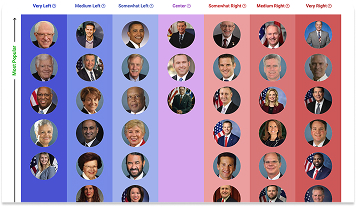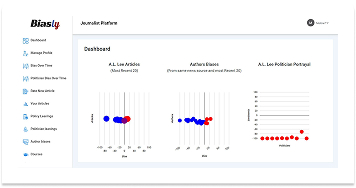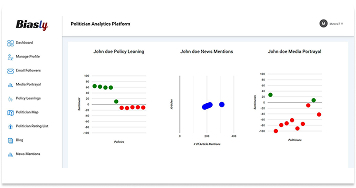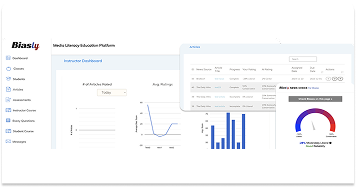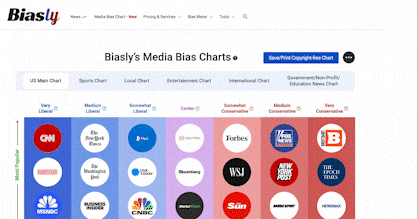Bias Meter
Extremely
Liberal
Very
Liberal
Somewhat Liberal
Center
Somewhat Conservative
Very
Conservative
Extremely
Conservative
-100%
Liberal
100%
Conservative
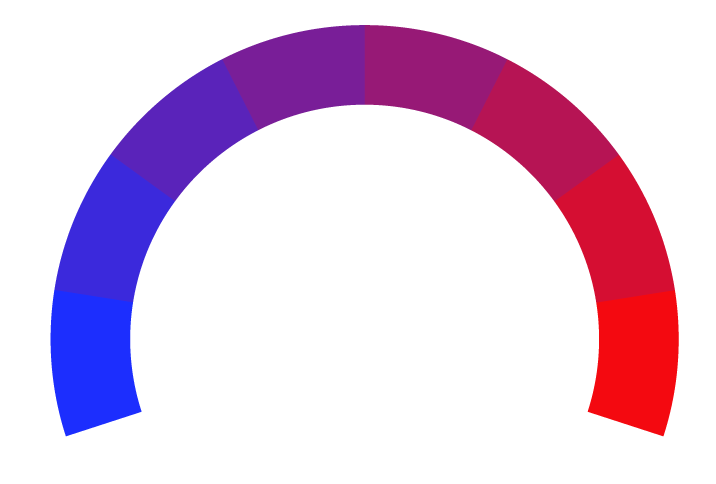
Biasly determines media bias ratings through a dual-layered approach combining artificial intelligence and analyst review. The platform’s proprietary bias detection engine, Bias Meter, evaluates sentiment, policy position alignment, and language framing across thousands of data points in news articles. Analysts then verify and interpret the AI’s findings, providing additional context where needed. Learn more
- Profile
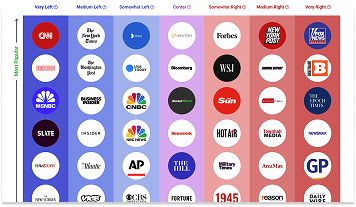
Chronicle Live on the media bias chart
Chronicle Live has a Bias Score of -10% Center which is based on a variety of factors including its policy and politician leanings, article ratings, and the use of biased language. Its Reliability is rated as Average, and additional analytical insights are available in the other tabs.
- Bias Rating
-10% Center
- ReliabilityPolicy Leanings
-10% Center
Extremely
LiberalVery
LiberalModerately
LiberalSomewhat Liberal
Center
Somewhat Conservative
Moderately
ConservativeVery
ConservativeExtremely
Conservative-100%
Liberal100%
Conservative
Average Reliability
*Our bias meter rating uses data science including sentiment analysis, machine learning and our proprietary algorithm for determining biases in news articles. Bias scores are on a scale of -100% to 100% with higher negative scores being more liberal and higher positive scores being more conservative and 0% being neutral. The rating is an independent analysis and is not affiliated nor sponsored by the news source or any other organization.
Politician Portrayal91% negative
Continue For Free
Create your free account to see the in-depth bias analytics and more.
By creating an account, you agree to our Terms and Privacy Policy, and subscribe to email updates.
Policy Leanings Analysis
Policy | Bias score |
|---|
Chronicle Live Editorial Patterns
Chronicle Live’s coverage of political topics often reflects a Center bias, with consistent patterns in phrasing, source selection, and thematic focus that are Neutral. The publication demonstrates journalistic standards in many of its reports, and there are very few instances of bias within written articles. This content analysis examines how Chronicle Live handles local issues, evaluating its language choices and editorial tendencies.
Coverage of Liberal vs. Conservative Topics
Chronicle Live’s articles include causes central to North East England, most prominently Newcastle upon Tyne. It provides articles on crime, traffic, travel, and politics, among others. Its coverage of England’s politics is typically presented in an unobjective manner. Bias is very rarely evident in Chronicle Live’s articles. Articles focus on informing the public about current events.
Biasly’s analysis of recent Chronicle Live articles reveals a tendency to present the news in a very fact-based manner, regardless of which side the article ought to pander to. For example, within articles detailing local councillors, the councillors’ apparent lack of functioning is left up to the audience to interpret.
There is a significant lack of media bias, as the authors explain the situation without embellishing any particular side.
Policy and Issue Framing
When covering local happenings, Chronicle Live often publishes articles on recent criminal behavior and information on the roads. This aligns with its Center bias, as the information is not colored with any bias. Similarly, coverage of updates in schools or crime only includes the facts, with very brief instances of opinion.
Chronicle Live speaks at length about the state of the roads in the North East, touching often on infrastructure investments. There are several Chronicle Live articles that highlight the importance of these investments for the public’s well-being. On crime, many articles cover incidents across the North East of England. Some articles inform the public of the debate surrounding police funding, especially with the number of articles written about criminal acts.
The majority of the news that Chronicle Live writes about is relatively negative, even if the article contains no bias. News about crime and traffic accidents is common, and these are not especially positive. The writing itself is entirely unbiased, yet there may be a slight sway towards a poor perception of Northeast news. This can also be seen within its media bias page, where it is revealed that its politician portrayal is 91% negative.
Coverage and Relevance
Chronicle Live’s reporting often touches on key issues central to the media political bias discussion. As such, it serves as a compelling case study for examining source bias and news media bias in regional reporting.
The North East of England houses a very diverse group of people, and the news Chronicle Live presents strives to respect all points of view. Issues central to the North East are things like crime, travel/traffic, and politics. An analysis of bias within these is important to know whether the news one reads can be trusted. In this analysis, we will explore whether Chronicle Live provides high-quality news without biased media narratives to its audience.
Readers who wish to further explore how Chronicle Live compares with other publications can visit Biasly’s Media Bias Chart to analyze tone and word choice in real time.
Chronicle Live Bias Analysis
Chronicle Live began as “Evening Chronicle” in 1885. Today, it functions as a digital news platform, a sister source of what once was The Journal. Chronicle Live positions itself as a community asset focused on being a reliable news source for those living in Northeast England. It centers on the daily lives of inhabitants, and covers the topics most important to them. Travel is particularly important, as much of the North East’s population relies on public transport. Unbiased information about the state of travel is key, and Chronicle Live has become a leading outlet of this information.
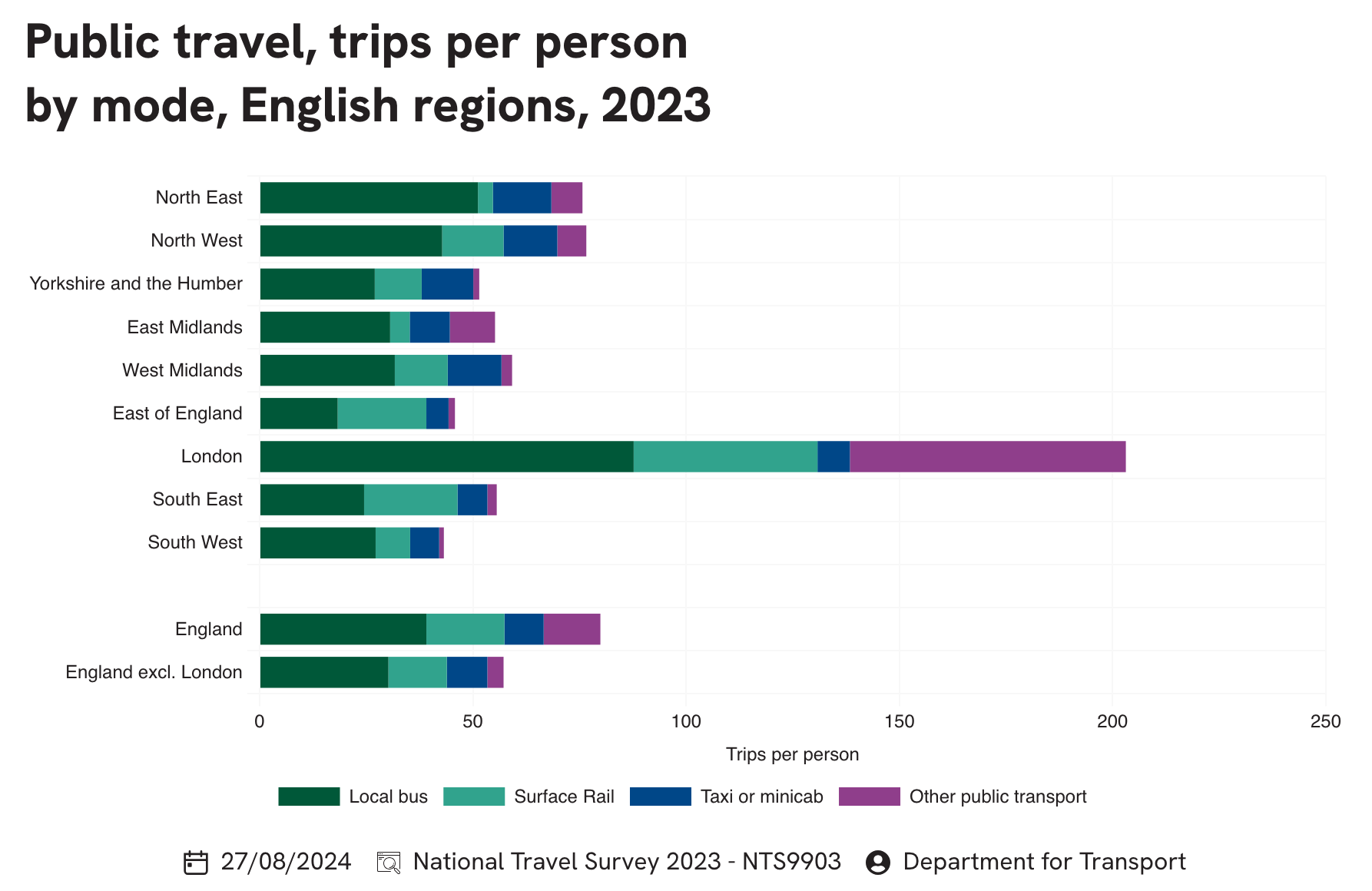
Source: North East Evidence Hub
According to Biasly’s media bias analysis, Chronicle Live has an average of 15,350,000 monthly visits. When it comes to media bias, both AI and media analysts have evaluated its content, sources, and funding to determine its political leaning.
As a leading local media outlet in Northeast England, Chronicle Live plays a significant role in informing the public. Readers’ trust in the accuracy of local news may mirror the conclusions reached by Biasly’s media bias ratings. This article delves into Chronicle Live’s editorial tendencies to explore whether political bias is present and, if so, to what degree.
Is Chronicle Live Biased?
Based on Biasly’s evaluations, Chronicle Live is rated as Center.
By examining content patterns and the broader context of media influence, we aim to offer a balanced perspective on Chronicle Live’s political bias—and contribute to the ongoing discussion about bias in the news.
How Does Biasly Rate News Sources?
Biasly uses proprietary algorithms and a team of analysts to provide comprehensive bias evaluations across thousands of news outlets. Over 200,000 articles from more than 3,200 sources have been analyzed to identify the most accurate and unbiased stories.
Biasly assigns each outlet three key scores:
- Reliability Score – Reflects factual accuracy
- AI Bias Score – Generated via natural language processing
- Analyst Bias Score – Assessed by human political analysts
These scores are based on seven core metrics: Tone, Tendency, Diction, Author Check, Selection/Omission, Expediency Bias, and Accuracy. These elements help analysts and algorithms evaluate the political attitude conveyed by each article.
Biasly’s Bias Meter ranges from -100% (most left) to +100% (most right), with 0% indicating neutrality. The system evaluates individual articles based on political terms, policies, figures, and sentiment to calculate precise bias ratings.
Is Chronicle Live Politically Biased?
Chronicle Live earns Center rating for its AI Bias Score and Center for its Analyst Bias Score. The Analyst Bias Score is generated by reviewers from liberal, moderate, and conservative backgrounds. Analysts reviewed Chronicle Live articles and noted a staunch commitment to remaining unbiased. Many of the articles do not have any significant bias, even if the overall spotlight is on more negative situations.
For example, when speaking about criminal actions at the local level, the reporting is quite unbiased. This contributes to Chronicle Live’s Center rating, as it does not sway in either direction.
A report gives an example of Chronicle Live’s unbiased writing:
“Recorder Ciaran Rankin sentenced him to 12 months suspended for two years with rehabilitation and alcohol abstinence requirements as well as £50 compensation for the headphones.”
The group of people that Chronicle Live writes for sits on the center-left of the UK’s political spectrum. As of 2024, the Labour Party is the dominant one in the region, which lends the North East its reputation for leaning left. Despite Chronicle Live’s adherence to maintaining journalistic standards, its public may lean in one direction and interpret the articles as such.
This Bias score is determined through natural language processing that evaluates the tone, word choice, and opinion embedded in the reporting.
Analysis of Bias in Chronicle Live Online Articles
Chronicle Live has found that in-depth coverage of North East England’s politics and dilemmas is one of the most effective ways to drive subscriptions. Given that much of its readership is Newcastle-based, where regional issues take precedence, it’s essential to ask: is Chronicle Live truly biased?
To evaluate this, we can analyze select Chronicle Live articles through several of Biasly’s bias rating criteria: Tone, Tendency, Author, Diction, and Expediency Bias.
- Tone: The overall attitude conveyed by the article
- Diction: Specific word choices made by the writer
- Author: The background and social presence of the journalist
- Tendency: Patterns of bias in the writer’s broader body of work
- Expediency Bias: Quick visual or textual indicators like headlines and photos that imply bias
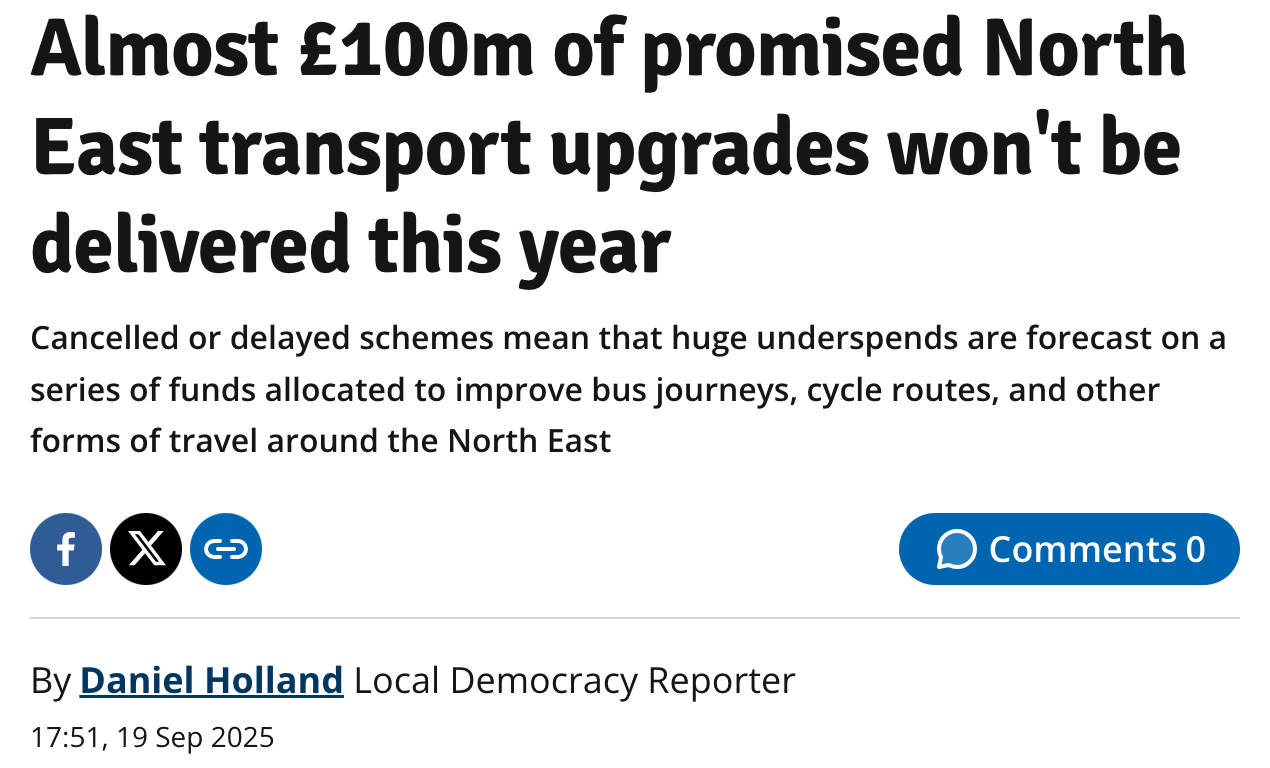
Source: Chronicle Live
One such article is the one with the headline above. The title and subtitle use strong negative language like “won’t be delivered” and “huge underspends” to drive people’s attention to this article. The article itself is incredibly unbiased, and it gives people the space to think what they will. The negative headline likely resonates with its center-left audience.
Reporter Daniel Holland explains the issue with the North East transport upgrades and how they are not going to be fulfilled. Vicki Gilbert, the chair of North East Public Transport Users, is quoted frequently. Her perspective is negative, which may sway public opinion on this issue, even if the situation is presented as objectively as possible. An example of her quotes is:
“…the money had the potential to transform the lives of public transport users.”
“It is hugely frustrating for bus passengers that this money sits unspent, whether this is due to a lack of political will or failure to appreciate the transformative potential of these BSIP schemes.”
The article is facts-based, but the way that the quotes are shown may indicate a more negative tone. Within the article, there is no opinion in any of the written sections, however. Only by the headline and the Chair of Transportation’s quotes is a little bit of bias seen, but it is not at all throughout the entire article.
Another example of a balanced article is “North East institution named university of the year by Times and Sunday Times” by David Huntley. Similar to the last article, this one gives the information clearly and concisely, awarding the audience the freedom to agree or disagree on their own terms. A case where this is seen is here:
“The University’s high score in the student experience category is testament to the huge range of opportunities open to students beyond academia, including 700 college sports teams, 80 music societies and more than 300 student societies.”
The article uses formal language, which helps to bolster its audience’s trust in the article. There is no usage of any colloquial phrasing, and the data from the Sunday Times and Times is a very straightforward presentation. It has a very even-handed tone, which contributes to its Center rating.
To sum it up, Chronicle Live shows consistent objectivity in its reporting. Both Holland’s and Huntley’s articles are very factual and very neutral. The quotations afford each article even more viewer trust. There is a strong tendency to remain even-handed when presenting facts.
Analysis of Chronicle Live Opinion Articles
To fully understand political bias in the media, it’s important to distinguish between factual reporting and opinion pieces. While reporting aims to present facts and let readers form their own conclusions, opinion articles express personal viewpoints on current issues. Although the previous section examined factual reporting, this section turns to how bias surfaces through Chronicle Live’s selection and tone of opinion content.
There is a definite absence of opinionated articles within Chronicle Live’s catalogue. On Biasly’s media bias page, some of Chronicle Live’s more recent articles were analyzed. A good example of a slightly more opinionated one is “Labour clings on to win North Tyneside Mayoral election by less than 500 votes”, which Biasly rated as having a Somewhat Left Leaning bias. This would be because of phrases like “sparking a Labour contest”, which lend this article a more prominent bias. It still absolutely adheres to Chronicle Live’s commitment of remaining impartial, but it does so a little less than other articles.
This shows that while Chronicle Live rarely publishes opinion pieces, occasional fragments of bias appear. This consistent selection of unbiased pieces can contribute to the public’s high level of trust, particularly those who live in the North East and are very centered on its politics.
Who Owns Chronicle Live?
Chronicle Live operates as a for-profit business, despite its articles not being locked behind a paywall. According to their website, the current team is made up of six people. The highest position is that of Regional Head of Print, currently held by Matt McKenzie.
Chronicle Live is a sister source of The Journal, and The Journal’s current editor is Graeme Whitfield, as also shown through the website. Chronicle Live holds its journalists to a high Editorial Code of Practice, which “sets the benchmark for ethical journalistic standards”. Their staff also goes through rigorous monthly training in areas like video, social media, and SEO tactics, in addition to their daily work as reporters.
These characteristics serve to further build public trust in Chronicle Live, allowing for more readers and garnering more website traffic.
How to Evaluate Bias
Although Biasly rates Chronicle Live as Center, it’s important to remember that bias can vary from article to article. Chronicle Live’s articles have a high degree of neutrality, although there may still be brief instances of bias. This complexity underscores the importance of examining each article individually. So, let’s learn how to evaluate media bias.
Recognizing media bias requires awareness and critical thinking. Often, readers trust news sources that affirm their existing beliefs, a psychological tendency known as confirmation bias. This makes it harder to identify slanted narratives or one-sided reporting.
To combat this, it’s essential to challenge your assumptions by consulting multiple viewpoints and verifying news through third-party analysis. Tools like Biasly’s media bias ratings allow readers to compare the same news story across the political spectrum.
Ultimately, bias isn’t always a matter of what is said, it’s also about what is left out, how topics are framed, and which stories are chosen for coverage. Learning to recognize these patterns can help readers make more informed decisions and develop greater media literacy.
To start comparing news outlets and gain a better understanding of bias, sign up for Biasly’s Media Bias & News Analytics Platform to see how stories vary between sources.
Chronicle Live Reliability Analysis
Is Chronicle Live Reliable?
Chronicle Live finds itself toward the middle of the spectrum, with neither high nor low reliability. Its status as a local news outlet contributes to its moderate reputation for reliability. Many local people in the North East of England may support it, but the North East people are a politically diverse group. The reliability rating is not necessarily because of Chronicle Live’s writers themselves, but the way that its audience understands the situation.
This suggests that Chronicle Live’s popularity among North East England’s residents may dampen its reliability. Further investigation is needed to determine whether bias or other factors are affecting its accuracy. At Biasly, we specialize in evaluating not just bias but also the reliability of media outlets. Let’s explore the accuracy and trustworthiness of Chronicle Live.
How to Evaluate Reliability?
Reliability refers to how trustworthy or accurate a news source is. If we can’t trust what we read, then continuing to consume content from that outlet serves little purpose. So how do we evaluate a news outlet’s reliability?
There are several potential measures of reliability to look out for when trying to determine whether a media source is reliable or not. Red flags for an unreliable article can include the presence of wild, unsubstantiated claims, facts dependent on other unreliable sources, heavy use of opinionated language, and more. In contrast, hallmarks of a reliable source include:
- Absence of subjective language
- Citing credible sources (e.g., .gov, .edu, academic references)
- Verifiable facts and statistics from multiple outlets
- Use of primary sources, like interviews or transcripts
- Consistency with coverage across other platforms
Biasly’s reliability scores incorporate these elements in evaluating media outlets.
So How Does Chronicle Live Fare in Its Reliability?
The political reliability index developed by Biasly assesses both accuracy and trustworthiness. Chronicle Live currently holds Average Reliability Score, which is calculated as a weighted average of:
- Fact Analysis Score – Evaluates the accuracy of claims, facts, and evidence.
- Source Analysis Score – Assesses the number, diversity, and credibility of sources and quotes used.
Chronicle Live’s Source Analysis Score is Average at 42% Reliable. This suggests moderate trustworthiness in its sourcing practices. The score is AI-generated and considers quote length, frequency, diversity, and quality.
The Fact Analysis Score is yet to be finalized. This score will further determine how well the Tribune supports its claims, addresses selection and omission bias, and presents verifiable evidence. Until this is available, readers are encouraged to perform their own evaluations using Biasly’s media bias tools.
While Chronicle Live leans toward factual reporting, occasional lapses, such as unbalanced viewpoints or incomplete data, can affect its reliability rating. These nuances emphasize the importance of analyzing individual articles.
Chronicle Live’s Accuracy and Reliability
According to Biasly’s analysis, Chronicle Live maintains Average Reliability Score, but individual articles may vary significantly. Let’s dive into the details.
Political orientation plays a crucial role in how audiences perceive reliability. Chronicle Live’s audience, after the recent elections, is governed by a center-left party called the Labour Party. This may also be affecting the way that Chronicle Live’s articles are comprehended. To validate such claims, it’s essential to analyze whether the publication backs its assertions with sufficient evidence and diverse viewpoints.
Two common types of bias that affect factuality include:
- Selection Bias – Highlighting or omitting stories to fit a particular narrative.
- Omission Bias – Leaving out differing perspectives or relevant details to skew perception.
Biasly’s accuracy ratings use a scale from 1% (least accurate) to 100% (most accurate). Factors include the presence of supporting evidence, internal and external reliable sources, and balanced viewpoints.
For instance, Biasly gave Reuters a Center Bias and a Good Analyst Reliability Score. One Reuters article, titled “Philippines central bank tightens rules on large cash withdrawals amid corruption crackdown”, showed an Average reliability rating for failing to include opposite sources and multiple quotes. Within the article, there is only one quote. While this quote is still from Bangko Sentral ng Pilipinas, the lack of any other quotes – and quotes opinionating against what has transpired – gives it an Average reliability rate.
In contrast, another piece from the outlet, titled “Trump and Xi make progress on TikTok deal, plan to meet in South Korea”, featuring several more quotes and varying viewpoints, was rated as Somewhat Right and also scored Average for accuracy. The most significant language opposing liberal views here belongs to a Chinese citizen, who does not agree with the current United States policies regarding China. Nicoco Chan reported from Shanghai:
“I don’t really believe the U.S. wants a ‘win-win’ situation,” said Lin Jinqi, 22. “t seems like (the U.S.) just wants to be the boss.”
“So in many areas, they deliberately set up obstacles for China,” he said. “We don’t go looking for trouble, but we’re not afraid of it either.”
We will take a closer look at more examples like this below to provide a further investigation into the reliability of Chronicle Live’s articles. This will include its use of selection bias, omission bias, and the quality of its sources and the facts it uses.
Quality of Sources and Facts Used
Chronicle Live often uses credible sources from across the political spectrum. The facts it uses are often sourced from primary sources, such as court cases or directly from the people involved. These help viewership trust in Chronicle Live to remain high.
The article “Inside Newcastle cannabis factory where man was sleeping on bed in kitchen” is a good example of how balanced Chronicle Live’s articles tend to be. The situation is well documented and supported by legal references, and the article accurately explains what has so far happened with Alden Zefe, who was growing cannabis plants at that house. There is no opinion at all within the article, and no perspectives either advocating or criticising Zefe. The only thing that is explained is how he was detained, that he was found guilty, and speculations about what could possibly happen after.
Another article that also upholds this balance is “Why paramedics and police officers were at a Newcastle city pub today”. This article goes into detail about what occurred at a Newcastle city pub, and why there were officers. It explains that one person was taken to the infirmary, and does not yet give an official reason for the incident. This article includes several quotations from varied sources. These quotations are also presented without bias, even if they are topics that may be alarming for some. An example of such a quote is the following:
“We were called to an incident on Clayton Street, Newcastle shortly after 12pm this afternoon, 8 October.”
This article’s credibility also stems from the number of quotations it uses— 2, and several links. These quotations strengthen reliability by providing context from a trusted source, offering readers a more authentic account.
This article features two sources, the North East Ambulance Service (NEAS) and the Northumbria Service. The incident occurred at Black Garter pub on Clayton Street. The NEAS and the Northumbria quotes and links provide the audience with the information to make their own decisions.
- North East Ambulance Service
- Northumbria Police
The article primarily relies on primary sources. These sources are mainly quotes from the North East Ambulance Service, in which parts from the official report are pulled. These are highly valid and enhance the article’s reliability, given its focus on what happened at the Black Garter pub on October 8th.
Selection and Omission Bias
Chronicle Live provides extensive coverage of issues and happenings in North East England, as its readership is based primarily there. Even though Chronicle Live is known for writing very unbiased articles, there is still a possibility of occasional opinionated writing getting people’s attention.
In “Hundreds in North East ‘needlessly die’ while waiting for lifesaving transplant according to news NHS figures”, selection bias surfaces through only highlighting the negative aspect of the situation, that many are ‘needlessly dying’ because there are enough organs to transplant. The article does not explore positive initiatives in the field of organ transplantation/donation. Still, it remains rooted in verifiable quotes.
The article does not highlight any proactive or positive measures taken by medical professionals in this field. The author addresses the looming threat of not having enough organs to give to transplant patients, which is an incredibly reasonable fear. Yet it does not explore broader perspectives or offer a positive story to counteract the stress created by the original article. That said, the reporting does not cross into overt editorializing and is still grounded in verifiable facts and quotes.
In these pieces, issues with factuality, sources, selection, and omission are very rarely present. The articles we’ve covered so far reflect Chronicle Live’s Center views, but this is not detrimental to its reliability. The contents of Chronicle Live’s article maintain accuracy and tend to cite evidence from numerous and varied sources.
So, Is Chronicle Live Reliable?
Overall, Chronicle Live can be considered to be an outlet that is moderately reliable. The site often prioritizes news catered only to residents of North East England, with many quotations and brief instances of selection and omission bias on sensitive topics. While claims are often supported with evidence, more quotations from varied/opposite sources can be used to further improve viewer trust.
As media literacy improves, readers can more easily detect issues with selection bias, omission bias, and factuality. To strengthen your ability to assess reliability across the political spectrum, use the News Bias Checker to compare how multiple outlets report the same story.
This empowers you to consume more accurate, balanced, and dependable news.
Additional Insights
News Source Comparison
When it comes to news source comparison, Chronicle Live is often evaluated alongside other regional and national outlets that lean center or center-left. Sources like Reuters, Los Angeles Times, or The Hill often present similar tones and editorial philosophies. While Chronicle Live maintains a Center media bias, it differs from strongly partisan sources in that it strives for regional coverage balance and unbiased reporting.
This puts it in contrast with more biased media outlets that present consistently one-sided narratives without factual counterpoints. Readers seeking balanced political coverage may compare Chronicle Live’s framing of issues with outlets rated as Center or Lean Right on our Media Bias Chart, or explore other regional papers on our Similar Sources page.
Notable Contributors and Authors
Chronicle Live features a diverse range of reporters and columnists, many of whom are deeply familiar with North East England’s social and political climate. Reporters like Daniel Holland, who frequently covers criminal cases, exemplify the outlet’s strength in local investigative journalism. David Huntley, a multi-media journalist, also writes often for Chronicle Live. He writes about a wide variety of topics, and maintains a strong command over adhering to Chronicle Live’s principle of publishing unbiased articles.
Other contributors focus on specific area-by-area coverage, local politics, or traffic and travel—topics central to North East England communities. Their work is generally grounded in factual reporting. The presence of recurring bylines helps readers evaluate individual journalists’ bias over time.
Related Tools and Resource Pages
To better understand how Chronicle Live fits into the broader media landscape, we recommend exploring these helpful resources:
- Media Bias Chart: See where Chronicle Live ranks among hundreds of media outlets across the political spectrum.
- Political Bias Chart: Visualize political slants of news sources across various policy areas.
- Journalist Bias Analytics Platform: Explore how individual journalists contribute to bias within their publications.
- Politician Bias Analytics Platform: Compare how politicians are framed differently by Chronicle Live and other outlets.
- Media Literacy Education Platform: Learn how to critically assess media sources, bias techniques, and news reliability.
Frequently Asked Questions
Chronicle Live is rated as Center based on Biasly’s media bias algorithm, which assesses sentiment, article framing, and policy favorability.
While Chronicle Live is not widely known for promoting fake news, some articles have shown selection and omission bias, especially in political reporting. Its factual reporting is generally sound.
Biasly uses a combination of AI sentiment analysis and human analyst review to assess tone, fact accuracy, source quality, and media bias indicators. Learn more on our Bias Meter page.
Yes. Chronicle Live typically upholds fact-based journalism, and there are very rare situations in which partisan framing influences their journalism.
Ratings are based on recent news using data science and A.I. technology.
Military Spending
| Date | Sentiment | Associated Article | Snippet |
|---|---|---|---|
| 08/25/2019 | 75% For | Trump Family Detentions Flores Agreement (link) | So, of course, the Trump administration is doing the opposite in a baldfaced |


























